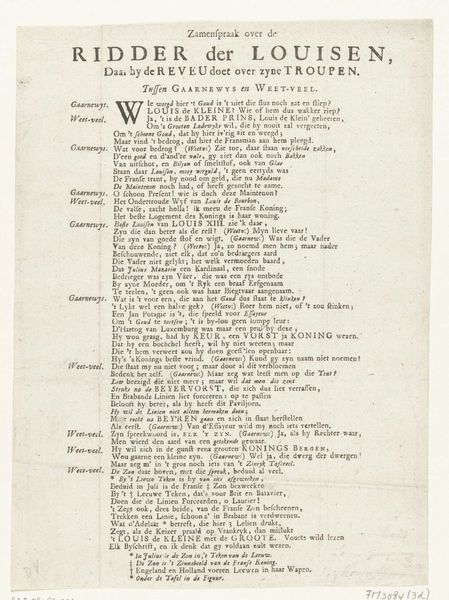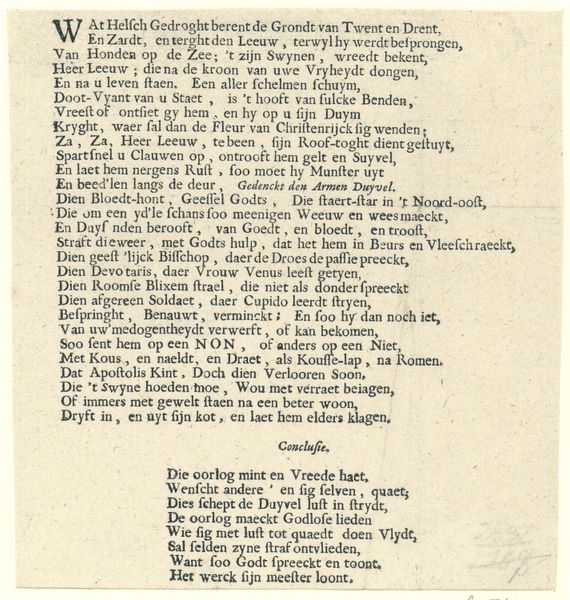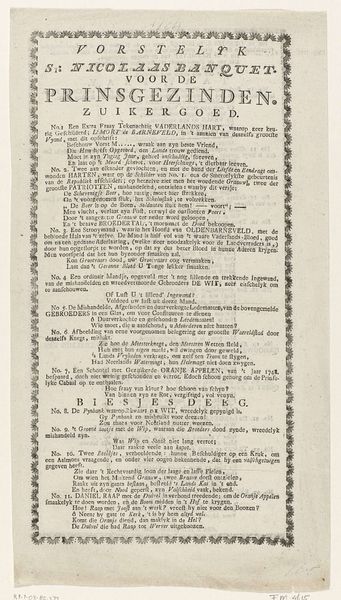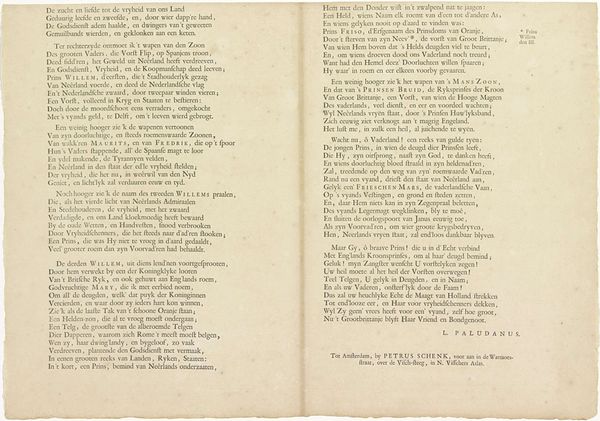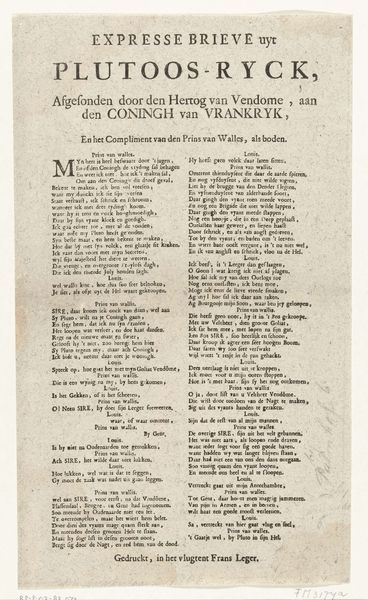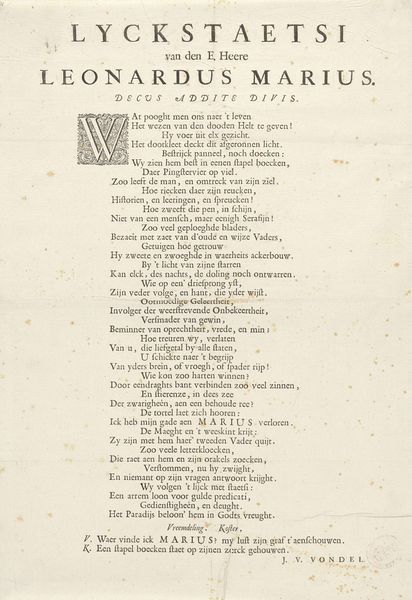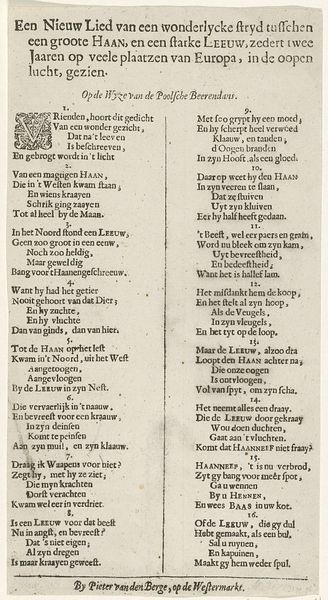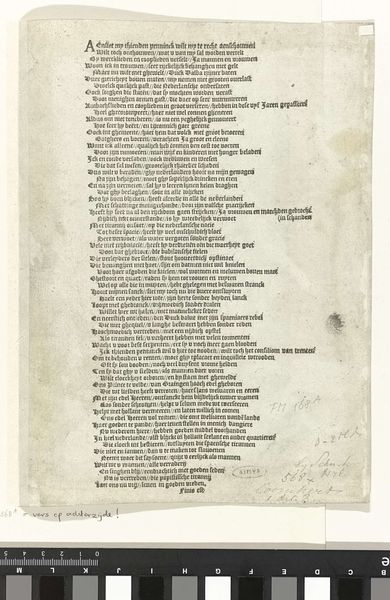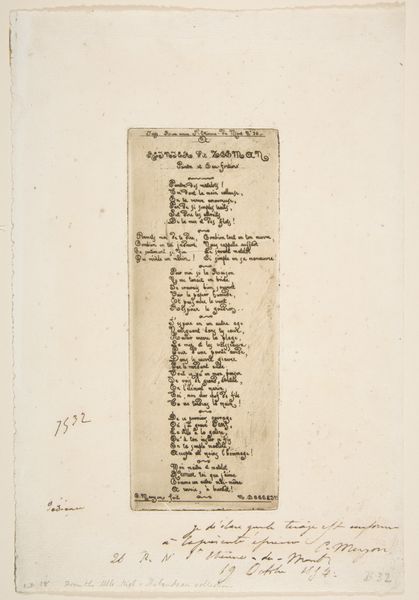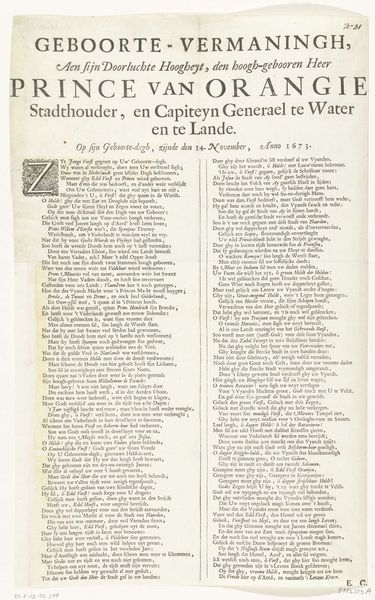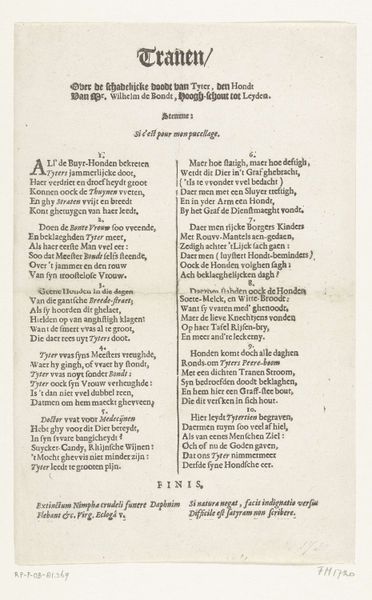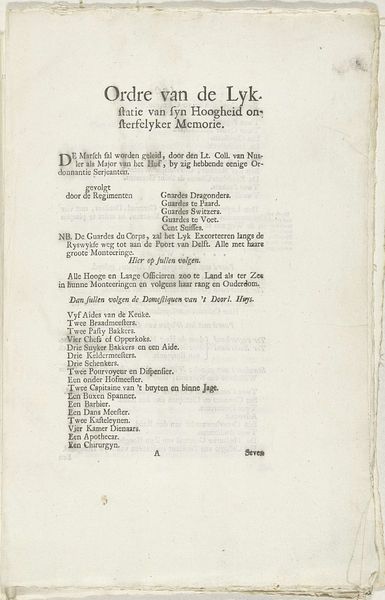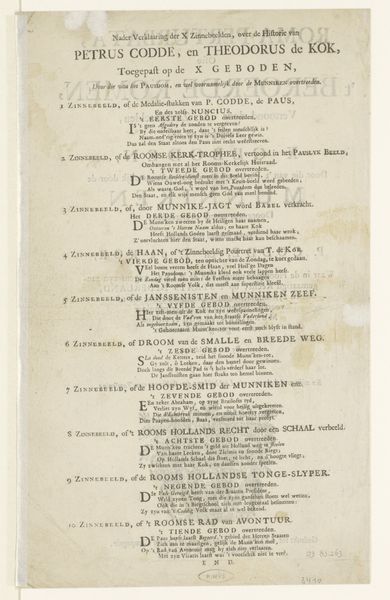
graphic-art, print, typography
#
graphic-art
#
dutch-golden-age
# print
#
typography
Dimensions: height 266 mm, width 195 mm
Copyright: Rijks Museum: Open Domain
Curator: Let's consider this intriguing broadside from around 1705 or 1706, currently held at the Rijksmuseum. The anonymous print bears the verbose title "Samenspraak over de Nieuwe Ridder van de Goude Louisen", or "Conversation about the New Knight of the Golden Louis". It showcases typography and graphic art from the Dutch Golden Age. What is your immediate response to it? Editor: The sheer density of the text makes it intimidating. It feels more like deciphering a coded message than viewing a typical artwork. The layout looks purposefully complex, chaotic almost, like the sentiments expressed within must be equally layered and challenging. Curator: Indeed. The piece lampoons Louis William, Margrave of Baden-Baden, accusing him of treachery for accepting bribes—the "golden Louis" refers to Louis d’or coins—from the French. The text is presented as a dialogue between two characters, Gaarnewys and Weet-veel. It’s interesting how political satire uses popular media like prints to spread its message. Editor: The use of language as a weapon here is fascinating. And it isn't just the text. The symbols that appear amidst all of the words convey the messages as well: that dinner table with the rabbit head on the plate, the figures in disarray… The whole composition critiques wealth, betrayal, and perhaps most of all, the cost of political maneuvering. The rabbit, known for its cunning, clearly stands in for Margrave. Curator: It reflects a society grappling with shifting alliances and the impact of money on morality. The piece serves not just as a record of specific historical grievances but also raises timeless questions about integrity, leadership, and the power of propaganda. Editor: Right. To create such work reveals artists acting as cultural commentators, playing an active role in the political landscape. What resonates even now is how effectively image and text combined amplify criticisms against powerful figures. I think a piece like this proves how critical historical context is, especially considering the strong feelings this undoubtedly stoked at the time. Curator: Indeed, the way it entwines historical critique with biting satire is both informative and, well, considering the subject, remarkably bold. Editor: Yes, it offers a sobering, potent view of accountability—or lack thereof—even among the most powerful figures of the era.
Comments
No comments
Be the first to comment and join the conversation on the ultimate creative platform.
